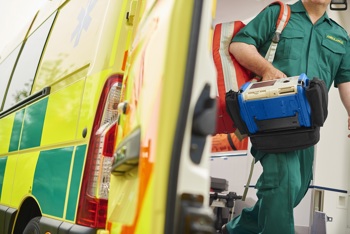
The acute side of the healthcare sector is considered the front door of health and social care, and continues to be under immense pressure as acute services battle to stay afloat amidst rising demand and a limited supply of resources.
In addition to staff shortages and underfunding, rapid response crews are heavily impacted by late discharges and ambulance handover delays. As a result, people arriving at hospitals in ambulances have experienced waits of up to 12 hours (also known as “the Trolley wait”) to be admitted onto a hospital ward.
With this in mind, the government has outlined several measures to alleviate the burden on acute services and has pledged to ramp up support with £450 million in ringfenced funding. In addition to this significant cash injection, the following practical measures are underway:
- 500 new ambulances deployed to increase fleet capacity and bring down response times by March 2026.
- 40 Same-Day Emergency Care NHS and Urgent Treatment Centres have been commissioned to reduce handover delays and enable people to be treated outside of A&E and in the safety and comfort of their communities.
- 15 new mental health crisis assessment centres to enable people to get help without needing to wait in A&E
- A goal to reduce Category 2 ambulance response times to 30 minutes (down from 35) in a bid to limit handover delays and improve standards, particularly for stroke victims and those with heart conditions.
A Stronger Role in Prevention and Community Care
Ambulance services are and have been treated as the default solution response to an array of health and social care crises. Recognising this, the government’s Fit for the Future 10-Year Plan recognises this and has placed a major focus on preventative health care models and early intervention.
Virtual wards, wearables and other technology-enabled care tools have shown to viably support prevention efforts in the last few years, and with community hubs being placed at the centre of prevention initiatives going forward, Hospital at Home and virtual wards schemes are likely to be scaled alongside them.
Hospital admission avoidance is also high up on the agenda for the government and is one of the biggest pain points for trusts and crisis teams. Between 2024 and 2025, 30% of ambulance handovers took 30+ minutes, up from 28% in 2023/24.
Improving primary care pathways, along with access to social prescribing programs and urgent community response teams are also being worked on to help crews cope with the demand on hospitals, whilst giving them grounds to treat people safely at home as opposed to defaulting to a busy hospital ward.

Digital Integration to Support Frontline Staff
Technology sits at the heart of the plan, with promises of unified patient records and a more powerful NHS App. For ambulance trusts, this integration could be transformative. Access to care records and visibility of a patient’s medical history in real time would not only enable them to make snap decisions, it would also reduce the risk of service duplication and improve patient safety.
Electronic patient records (EPRs) and other digital solutions like ambient voice technology are also being positioned as methods to document data and log crucial information like vital signs readings more accurately. With secure, interoperable systems also in place, these tools should naturally enable ambulance staff to put their focus into improving care delivery and spend less time filling out paperwork.
“Urgent and emergency care services provide a life-saving first line of defence for patients – but for too long now, despite the incredible hard work of staff, the speed and quality of NHS care has often not been good enough!” – NHS CEO, Jim Mackay
Smarter Use of Data & Workforce Wellbeing
The plan’s commitment to workforce growth and wellbeing resonates strongly in ambulance trusts, where retention and morale are major challenges. Investing in other smart digital solutions such as predictive analytics, digital scheduling and fatigue monitoring are also ways to balance staff numbers and support smarter rostering.
The move towards outcomes-based prevention highlights the value of ambulance data. Call volumes, response patterns, and frequent caller insights can all feed into ICS-wide planning, helping to target resources more effectively and reduce health inequalities.

Challenges Ahead
Of course, there are hurdles. Funding remains uncertain, timelines stretch as far as 2028, and integration is only as strong as local delivery allows. For ambulance trusts - which are often at the sharpest end of system pressure - real improvements will depend on whether these reforms translate into tangible changes on the ground.
No Time to Wait
The 10-Year Plan sets a vision that aligns with what ambulance trusts have been calling for: better integration, better data, and less reliance on hospital admissions. If implemented well, it offers a route to safer working conditions, faster patient handovers, and more proactive models of urgent care.
But the sector can’t afford for this to be another long-term vision that falters before it gets even close to delivery. For ambulance trusts, the future lies in being not just the first responders to crises, but integral partners in prevention, digital innovation, and community-based care.

 AU & NZ
AU & NZ
 SG
SG
 MY
MY
 US
US
 IE
IE
